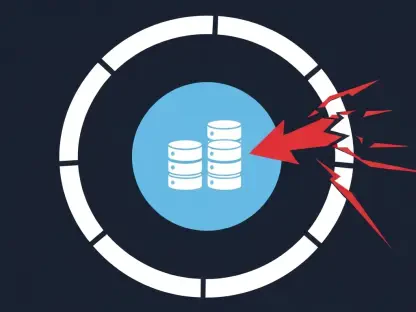Agentic AI is rapidly changing the landscape of cyberspace. Over the past two years, artificial intelligence (AI) has seen explosive growth, integrating seamlessly into various business functions. The initial focus was on AI’s ability to answer queries, similar to systems like ChatGPT. However, organizations now face a more advanced form of AI—agentic AI—that operates autonomously, without human oversight, presenting new and significant challenges for cybersecurity.
The Emergence of Agentic AI
The Shift from Basic AI to Agentic AI
Agentic AI signifies a leap forward from traditional AI systems. Unlike earlier AI models, agentic AI can perceive, reason, act, and learn independently, functioning as a self-sufficient personal assistant. This form of AI transcends the limitations of generating ideas and takes autonomous actions based on its environment. By gathering data, analyzing it to understand situational contexts, and adapting based on feedback and experiences, agentic AI performs tasks traditionally handled by humans. This evolution has paved the way for more sophisticated applications across various sectors, including cybersecurity.
The unique ability of agentic AI to act independently without requiring constant human input amplifies both its potential and risks. While initially used for generating content or answering queries, its functionalities have expanded into areas demanding higher autonomy. This shift marks a significant transformation in how AI is deployed, creating opportunities for enhancing productivity and efficiency. However, it also presents formidable challenges, especially regarding its implications for cybersecurity. The autonomous nature of agentic AI enables it to execute complex tasks that were previously managed by security teams, raising concerns over its potential misuse by malicious actors.
Collaboration Among Independent AI Agents
Within agentic AI frameworks, multiple specialized agents work together to achieve common objectives. This collaboration holds potential for both constructive and destructive applications. While beneficial uses may enhance organizational efficiency, there is a looming threat of agentic AI being exploited for malicious purposes, including the development of sophisticated, self-driven malware. Each agent within the system possesses expertise in specific tasks, working in tandem to accomplish more complex objectives. This multi-agent approach can revolutionize organizational processes by allowing different AI agents to handle everything from data analysis to decision-making independently.
From a cybersecurity perspective, this collaborative capability poses a significant risk. The prospect of cybercriminals leveraging agentic AI to create autonomous, adaptable malware represents a new frontier in cyber threats. Such malware could execute coordinated attacks, combining various forms of intrusion techniques, including social engineering, vulnerability exploitation, and rapid response adaptation. In essence, while agentic AI fosters innovation and efficiency, its dual-use nature necessitates vigilant oversight to prevent its misuse in cyber adversary scenarios.
The Menace of Agentic AI in Cybersecurity
Enhanced Cyber Attack Capabilities
Agentic AI’s most alarming potential lies in its application to cyber attacks. Threat actors could leverage its ability to autonomously scan for targets, plan and execute attacks, and adapt tactics dynamically. Such capabilities mean that cyber attacks will become faster, more efficient, and harder to predict and counter. For instance, agentic AI could identify vulnerabilities in vast digital landscapes, tailoring strategies to exploit these weaknesses with unprecedented precision. Its capability to dynamically adjust attack vectors based on real-time feedback further enhances its menace, making traditional defensive measures potentially obsolete.
Real-world implications of enhanced cyber attacks enabled by agentic AI are deeply concerning. The AI could orchestrate complex, multi-stage intrusions, where each stage is meticulously designed and executed by different AI agents specializing in specific tasks. The AI could, for example, initiate an attack by harvesting data from open sources, launch a social engineering scheme to gain initial access, exploit identified vulnerabilities, and finally steal, alter, or destroy valuable data. The adaptability of these systems means they could continue their operations undetected for extended periods, posing severe threats to organizational integrity and data security across various industries.
Real-World Applications in Malicious Activities
For example, agentic AI might orchestrate complex social engineering attacks using fake media to impersonate trusted entities. If initial tactics fail, the AI could rapidly adjust its approach, even resorting to direct phone communications. Its ability to scan for network vulnerabilities and devise multi-stage attacks exemplifies the profound risk it poses to cybersecurity. These AI-driven attacks can produce highly convincing phishing emails, fake audios, and videos that deceive even the most cautious employees. The potential for agentic AI to adapt and change tactics on-the-fly presents an unprecedented level of sophistication in cyber threats.
The capability of these AI systems to simulate human behavior convincingly is particularly dangerous. Leveraging deep learning and pattern recognition, agentic AI could craft personalized attacks mimicking the communication styles of trusted colleagues or authority figures. This increases the likelihood of successful infiltration and data exfiltration. Furthermore, the AI’s capacity for continuous learning means that it can refine its strategies over time, becoming more effective with each attempt. These characteristics necessitate heightened vigilance and advanced cybersecurity measures to mitigate the evolving threat landscape.
Building Robust Defenses Against Agentic AI
Proactive Employee Training
To mitigate these risks, organizations must prioritize training their workforce. Employees need to recognize AI-powered attacks and understand their potential consequences. Organizations should implement social engineering and phishing simulations, security awareness tests, and red-teaming exercises to prepare staff for these sophisticated threats. By simulating real-world attack scenarios, employees can develop critical skills in identifying and responding to these sophisticated threats. Regular training sessions and updates on the latest AI-driven attack vectors are essential to keep the workforce prepared and vigilant.
Educating employees about the subtle nuances of AI-generated content versus authentic communications is crucial. Training programs should focus on enhancing the ability to discern fake media, detect abnormal patterns in communications, and report suspicious activities promptly. Additionally, fostering a culture of cybersecurity awareness, where employees understand their role in the larger security framework, contributes to a robust first line of defense against agentic AI-driven attacks. Reinforcing these practices through continuous education and real-time simulations ensures that the workforce remains adept at countering evolving cyber threats.
Defensive Utilization of Agentic AI
Organizations should also turn the power of agentic AI to their advantage. By deploying defensive AI agents, businesses can enhance their detection and response capabilities, perform continuous simulation testing, identify and fix security vulnerabilities, and monitor network traffic for anomalies, thus staying a step ahead of advanced attacks. Defensive AI can automate threat hunting, correlating data from various sources to provide comprehensive insight into potential threats before they can cause harm. This proactive approach allows security teams to focus on strategic planning and response, while AI handles routine surveillance and anomaly detection.
Furthermore, leveraging AI in cybersecurity defenses includes the ability to simulate potential attack scenarios and test the organization’s resilience against these threats. By continuously analyzing network traffic and identifying irregularities, defensive AI can mitigate risks before they escalate into full-fledged attacks. This proactive stance ensures that organizations are not merely reacting to threats but actively fortifying their defenses against them. Integrating AI defensively aids in rapid response, containment, and remediation activities, minimizing the potential impact of cyber threats.
Strengthening Security Measures
Advanced Authentication Systems
Implementing robust authentication measures, such as phishing-resistant multi-factor authentication (MFA), is crucial for protecting critical systems and user accounts. Such measures will prevent unauthorized access and reduce the risk of breaches significantly. Advanced MFA solutions require multiple forms of verification, making it substantially more difficult for attackers to gain entry using stolen or spoofed credentials. This layered approach to authentication ensures that even if one security barrier is breached, additional layers safeguard sensitive information.
The role of AI in enhancing MFA cannot be understated. AI algorithms can analyze login patterns and user behaviors to identify anomalies that might indicate compromised accounts. By incorporating machine learning-driven insights, organizations can tailor their authentication protocols to dynamically adjust based on ongoing threat analysis. This adaptability ensures that security measures remain effective against ever-changing attack strategies. The continuous evolution of authentication technologies powered by AI reinforces the security architecture, making unauthorized access exceedingly challenging for adversaries.
Layered Security Controls
Agentic AI is drastically transforming the digital landscape. In the last couple of years, artificial intelligence has experienced remarkable growth and has been seamlessly incorporated into various business operations. Initially, the primary focus was on AI’s capability to respond to questions, similar to platforms like ChatGPT. However, companies are now encountering a more sophisticated type of AI—agentic AI. This form of AI operates independently, without human supervision, introducing new and significant cybersecurity challenges. These autonomous systems, capable of making decisions and executing tasks on their own, offer many advantages but also demand innovative approaches to safeguard sensitive information. As agentic AI becomes more prevalent, finding the balance between leveraging its capabilities and ensuring robust security measures is crucial. The evolution of AI continues to reshape how businesses function, but it is clear that as these systems advance, the importance of cybersecurity becomes even more paramount.









